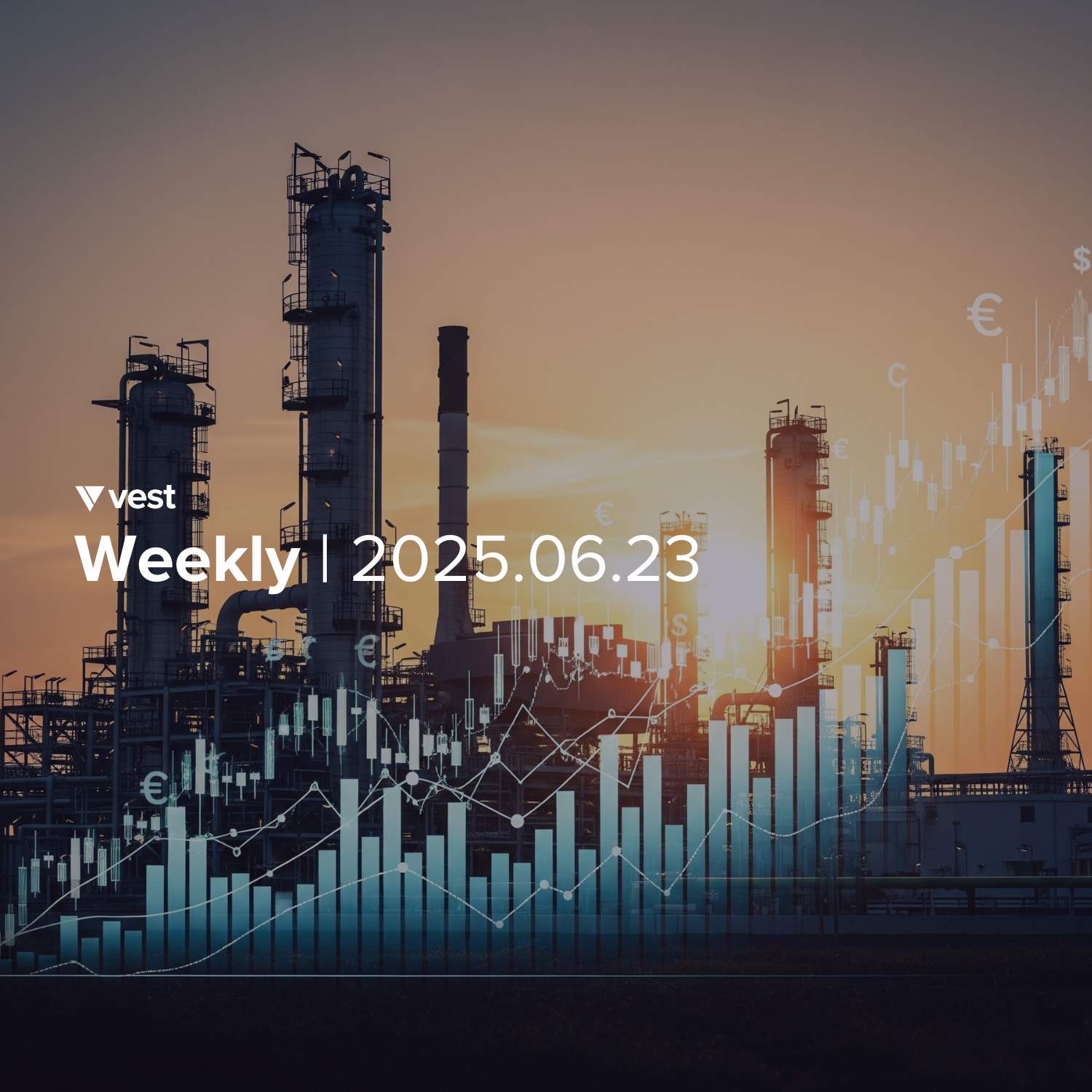Oil, tensions and slowing consumption: a week of contrasts on Wall Street
This week, global markets were on a rollercoaster. Between geopolitical tensions and economic data that calls for caution, understanding what's happening is key to making decisions.

There was a combination of factors that kept global markets on edge. While geopolitical tensions escalated in the Middle East, pushing oil prices higher, U.S. economic data pointed to weaker consumer spending and a more moderate pace of economic growth. The result was a volatile week, where energy sectors outperformed and investors paid close attention to every word from the Federal Reserve.
Geopolitics takes center stage
Markets opened the week with losses following heightened tensions between Israel and Iran. The potential closure of the Strait of Hormuz — through which nearly 20% of the world’s oil supply passes — pushed crude prices up: Brent rose more than 4%, and WTI reached multi-week highs. This environment boosted a rotation into defensive and energy sectors. Companies like Chevron, Marathon Petroleum, and Occidental Petroleum led gains within the S&P 500, showing that in times of global uncertainty, investors tend to seek refuge in familiar assets.
Consumption declines, growth slows
However, it wasn’t all about oil. U.S. retail sales data for May came in unexpectedly weak, with a 0.9% decline — well below expectations. This drop reflects a more cautious consumer attitude, which could impact economic activity in the second half of the year. In addition, several manufacturing indicators remain in contraction territory, suggesting that the consumer slowdown is beginning to ripple into other sectors.
The Fed in wait-and-see mode
Federal Reserve Chair Jerome Powell reiterated this week that the central bank will continue to carefully monitor inflation before considering any rate cuts. Although recent inflation data has been encouraging, the Fed doesn’t want to move too soon. Powell emphasized that while there is progress, the Fed needs more consistent evidence that inflation is under control before taking action. For now, the federal funds rate remains at 5.25%–5.50%, and markets are adjusting expectations for potential cuts in the final quarter of the year.
Volatile week, but no major surprises
Despite the initial jitters, the major indexes ended the week relatively unchanged:
S&P 500: +0.1%
Nasdaq: +0.6%
Dow Jones: flat
The Nasdaq’s positive performance was driven by the resilience of tech giants like Nvidia and Amazon, which continue to attract capital amid an uncertain macro environment.
Conclusion
This week made it clear that the U.S. economy is facing mixed signals: on the one hand, inflation appears to be under control; on the other, consumption is slowing and the international landscape remains complex. In this context, the Fed maintains a cautious approach, and investors stay alert for clues about the future of interest rates. The coming weeks will be key to determining whether labor and production data confirm a broader slowdown — or if we’re simply in a pause on the path to recovery.
The opinions in the preceding commentary are as of the date of publication and are subject to change. Information has been obtained from third party sources we consider reliable, but we do not guarantee the facts cited are accurate or complete. This material is not intended to be relied upon as a forecast or investment advice regarding a particular investment or the markets in general, nor is it intended to predict or depict performance of any investment. We may execute transactions in securities that may not be consistent with the report’s conclusions. Investors should consult their financial advisor on the strategy best for them. Past performance is no guarantee of future results. For illustrative purposes only. Does not represent an investment recommendation. For more information, please see our Social Media Disclosure.
Securities offered by Northbound Securities, LLC Member FINRA/SIPC
Sources: Bloomberg, Reuters Energy, CNBC Markets, ISM Manufacturing Report